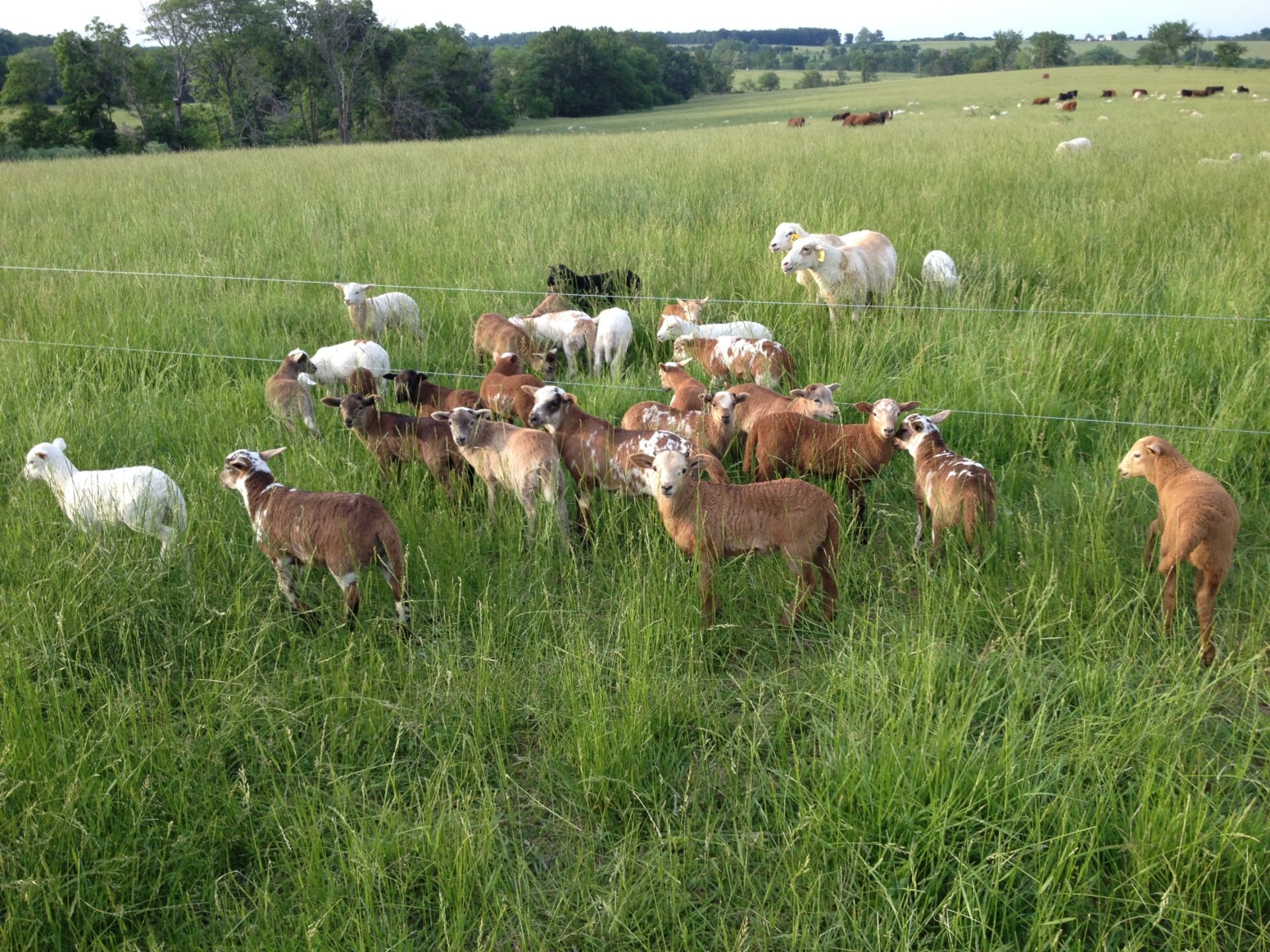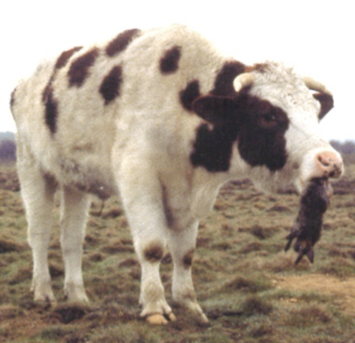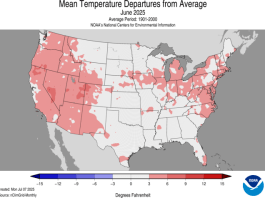
Since the last article, lambing has commenced for us at Markway Ranch. While it is an exciting time in the year of the sheep, I wish I could say lambing is all sunshine and roses. As with anything in life there are ups and downs, good days, and days we wish would have gone more smoothly.
Last time, we talked about why we lamb when we do, mainly working with Mother Nature, matching the market cycle, and some of how we do it. This time, I’d like to touch on some challenges that can occur while lambing. Keep in mind that these issues can be researched for more in-depth information. My goal is to just make you aware of them.
Pre-Delivery Issues
The first two things that can happen actually are more of a problem before lambing. One of them that rarely happen is when a ewe gets upside down on her back. Once in a while, a ewe that is especially wide due to carrying multiple lambs may end up on her back and if she is not found and helped up in a timely manner, she can bloat and die. A second thing that can happen before lambing is pregnancy toxemia or ketosis. It happens mostly right before lambing in ewes that are either excessively thin or fat, and are carrying multiples. It is caused by very low blood sugars in the ewe. If caught in time, a ewe can be treated with something like corn syrup or propylene glycol, but it is best prevented by good nutritional (i.e. grazing) management that keeps the ewe in good body condition.
Delivery Difficulties
Next on our list of challenges is problems in birthing, or dystocia. While not a common occurrence it happens. It can be caused by large lambs or a bad presentation. What I have encountered is the feet of one lamb trying to pass the birth canal with the head of another lamb. Usually, the lambs can be pulled, and the ewe saved however unless you almost live with them, catching a problematic lambing in a timely fashion can be difficult and sometimes the lambs cannot be saved.
Mismothering
 Early in lambing, when the season is just getting underway, mismothering usually isn’t too much of an issue. Occasionally, you may have a ewe that hasn’t had her lambs try to claim another ewe’s newborn babies. Such cases can be challenging to resolve and if possible, the offending ewe should be removed until she has her own babies. I understand that isn’t always possible and sometimes you just have to do the best you can. That may mean just trying to drive the offending ewe off so the mother and lambs can properly bond.
Early in lambing, when the season is just getting underway, mismothering usually isn’t too much of an issue. Occasionally, you may have a ewe that hasn’t had her lambs try to claim another ewe’s newborn babies. Such cases can be challenging to resolve and if possible, the offending ewe should be removed until she has her own babies. I understand that isn’t always possible and sometimes you just have to do the best you can. That may mean just trying to drive the offending ewe off so the mother and lambs can properly bond.
Most of the trouble with mismothering comes from moving ewes to new paddocks and oddly enough, thunderstorms. I’ll try to explain. Sheep have such strong flocking instincts that a ewe that is not a good monther may leave a lamb behind in an effort to keep up with the flock when we move them to a new paddock. This happens most often when the ewe has a set of triplets and one of the lambs is not as strong and can’t keep up. Many times,the mother comes back for them, sometimes they don’t. Good mothers will keep their lambs at their sides and even wait until others are through moving to take their lambs to the new paddock.
 This is why we let them have a couple of paddocks during lambing and move them less often than we do at other times of the year. The ewes can then spread out a little so they have room to lamb, but we can maintain a short enough graze period that parasites don’t become an issue. We also don’t want to give them too large of an area to lamb in because of predator pressure. I feel like our dogs do a pretty good job of protecting the sheep, but coyotes are masters at finding the chink in the armor and allowing too large an area to lamb in is inviting them to do so. Set stocking during lambing would be a nice option if we didn’t have to worry about parasites but that’s not the case.
This is why we let them have a couple of paddocks during lambing and move them less often than we do at other times of the year. The ewes can then spread out a little so they have room to lamb, but we can maintain a short enough graze period that parasites don’t become an issue. We also don’t want to give them too large of an area to lamb in because of predator pressure. I feel like our dogs do a pretty good job of protecting the sheep, but coyotes are masters at finding the chink in the armor and allowing too large an area to lamb in is inviting them to do so. Set stocking during lambing would be a nice option if we didn’t have to worry about parasites but that’s not the case.
As you can see, moving ewes at lambing and finding what works best is a little bit of a balancing act. Mismothering lambs with paddock shifts is just an issue with very young lambs. Once they get a few days old, they are often playing with other lambs and give little regard to their mama unless it’s time to eat. By then, they are well bonded to each other by sight, sound and smell and mismothering is rare.
I mentioned thunderstorms are a cause of mismothering. It never fails that sometime while lambing, we have at least one big thunderstorm roll through. The morning after it happens, I can almost count on picking up a few orphans. I really can’t explain why this happens. I believe it has to do with multiple lambs and the stress the storm causes the ewes. It seems the ewe moves taking a couple babies with her, while again, a weaker one gets left behind. I usually find them huddled up next to a tree, a bush or a mineral tub. These lambs end up in the bottle lamb pen.
Besides mismothering, orphan lambs can happen because of what I call starve-outs. Typically, if a ewe has triplets and is not able to take care of all of them one of them will become weaker until it can’t keep up and needs to be pulled and bottled. Ideally, they will be caught early on, however, and a new lamb with a belly full of colostrum is pretty hard to catch and running through the flock to try to catch one would only cause more issues. If I could choose, I would have every mature ewe have twins and have none of them have triplets. Triplets just cause too many issues and don’t work that well in our low input system.
Flystrike
Flystrike is probably to me the most horrendous malady of the sheep. It is caused by the blow fly. Typically, it occurs in extended periods of wet, warm weather where sheep don’t have a chance to dry out. The fly is attracted to smelly, dirty fleece which is caused by bacteria. The fly will lay its eggs in the wool, most typically on the backs of the sheep where stubborn patches of wool fail to be rubbed off or shed. The eggs hatch and migrate down to the skin and the maggots proceed to literally borrow through the skin and eat the flesh of the animal. It’s a terrible sight and one that is hard to catch early because the evidence hides under the wool and is not readily visible. One needs to look for a sheep that is uncomfortable, exhibiting such signs as stamping its feet, twitching, biting at its back and even laying in mud or water. Keep in mind that contrary to what many believe, sheep are a very tough animal. Being a flocking animal, if they show weakness, they know they are a prime target for predators. Because of this, they don’t readily show weakness until they are oftentimes beyond treatment. If flystrike is caught early and treated, animals can recover. When extended periods of rain, warm weather and low winds are forecast, be extra vigilant. If an animal should die, the carcass should be removed and buried or the blow fly population could explode causing further issues.
While the above listed problems or challenges associated with lambing can occur, they do tend to be the exception rather than the rule. I hope you will not be dissuaded from raising sheep, for the positives far outweigh the negatives, and the good days far outnumber the tough ones.




